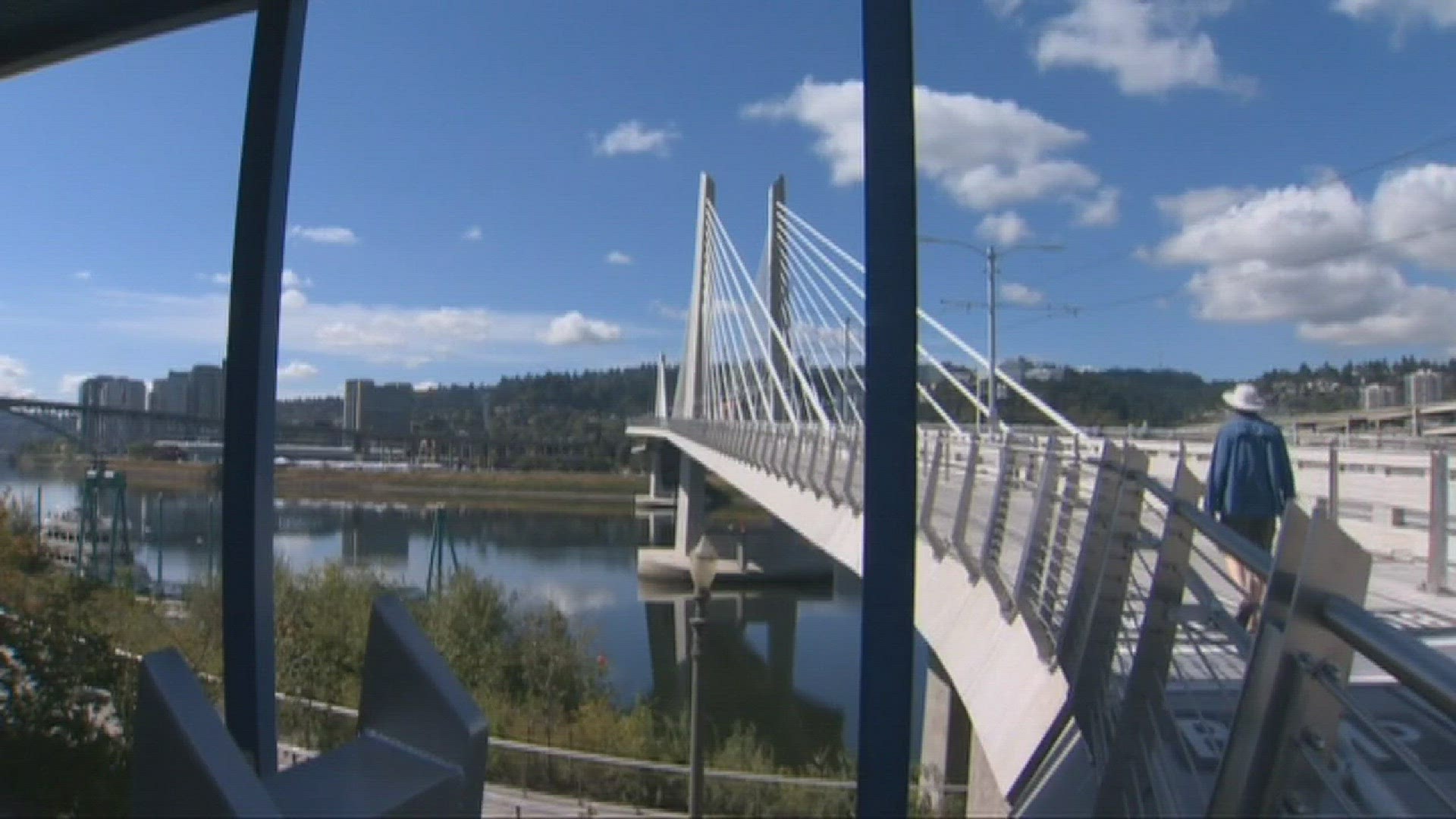PORTLAND, Ore. — With its iconic look set against the Portland skyline, the diagonal cable lines along the Tilikum Crossing bridge serve more than an aesthetic purpose. They are critical to the bridge's support system.
"Every bit of mass or weight that's on the bridge deck gets transferred through this system and into the tower, and then down into the ground," said Matt Baccitich, a project manager with TriMet's maintenance department.
That means every bus, MAX train and streetcar that crosses the 1,700 foot span puts pressure on the cables.
"When you're talking about such massive objects such as trains and buses, we need that system to be robust. We need that system to be maintained in the state of good repair so that we can continue operating that bridge as it was designed and intended," Baccitich said.
The bridge's cable inspection started on Oct. 9 and will last until Oct. 27. The bridge's manufacturer, a French engineering firm called Freyssinet, is conducting the inspection. The firm will inspect the bridge alongside TriMet’s Maintenance of Way team.
First opened in 2015, Tilikum Crossing is the first bridge built in Portland in over 40 years. Prior to that, the Fremont Bridge opened in 1973. Tilikum Crossing is also the city's first car-free bridge, only carrying buses, MAX trains, bicycles and pedestrians. It was designed to last 100 years, but TriMet hopes to make it last longer.
"If we take care of it, if we maintain it, if we do our due diligence, it could last well beyond that 100 year design lifespan," Baccitich said.


This is the first inspection for the bridge that will look solely at the cable system. Inspectors will look for more than just wear and tear.
"The main thing they're looking for is moisture intrusion into the cable system." Baccitich said.
Each one of the decorative white tubes that encases the cables is coated in wax on the inside to keep moisture out. This type of inspection will happen every four years.
Beyond the stay-cable system inspection, the bridge is also given a general inspection every two years, as required by the federal government. During those inspections — which have happened in 2023, 2021, 2019 and 2017 — everything along the bridge is checked out.
While it's being inspected this month, MAX and bus lines will continue to cross as normal, but crews will alternate closing one of both sides of the bike and pedestrian paths.

